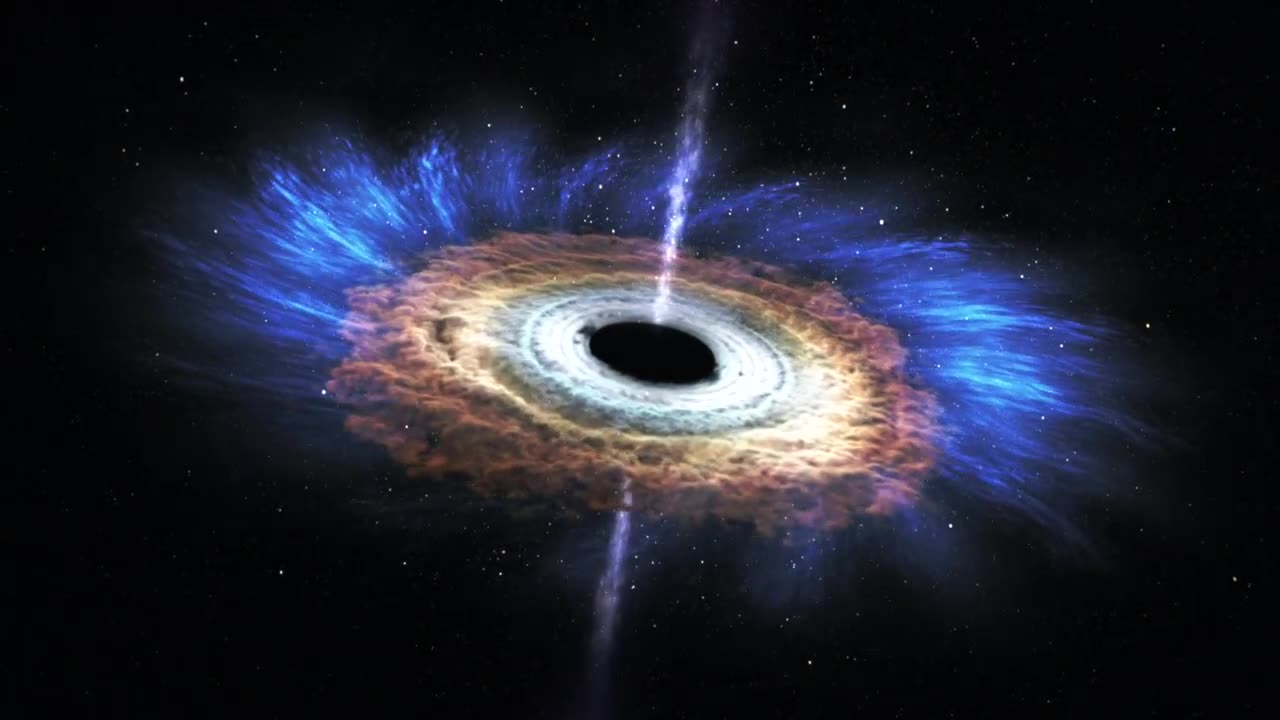Premium Only Content

NASA | Massive Black Hole Shreds Passing Star
This artist’s rendering illustrates new findings about a star shredded by a black hole. When a star wanders too close to a black hole, intense tidal forces rip the star apart. In these events, called “tidal disruptions,” some of the stellar debris is flung outward at high speed while the rest falls toward the black hole. This causes a distinct X-ray flare that can last for a few years. NASA’s Chandra X-ray Observatory, Swift Gamma-ray Burst Explorer, and ESA/NASA’s XMM-Newton collected different pieces of this astronomical puzzle in a tidal disruption event called ASASSN-14li, which was found in an optical search by the All-Sky Automated Survey for Supernovae (ASAS-SN) in November 2014. The event occurred near a supermassive black hole estimated to weigh a few million times the mass of the sun in the center of PGC 043234, a galaxy that lies about 290 million light-years away. Astronomers hope to find more events like ASASSN-14li to test theoretical models about how black holes affect their environments.
During the tidal disruption event, filaments containing much of the star's mass fall toward the black hole. Eventually these gaseous filaments merge into a smooth, hot disk glowing brightly in X-rays. As the disk forms, its central region heats up tremendously, which drives a flow of material, called a wind, away from the disk.
Music credit: Encompass by Mark Petrie from Killer Tracks.
This video is public domain and can be downloaded at: http://svs.gsfc.nasa.gov/goto?12005
You can read more about this at: http://www.nasa.gov/mission_pages/cha...
Like our videos? Subscribe to NASA's Goddard Shorts HD podcast:
http://svs.gsfc.nasa.gov/vis/iTunes/f...
Or find NASA Goddard Space Flight Center on Facebook:
http://www.facebook.com/NASA.GSFC
Or find us on Twitter:
http://twitter.com/NASAGoddard
-
 2:09:26
2:09:26
Side Scrollers Podcast
16 hours agoSplitgate 2 Reverses Course, Ubisoft Failures, RIP Julian LeFay | Side Scrollers
11.6K -
 17:01
17:01
GritsGG
12 hours agoAttempting World Record Win Streak! 18 of 71!
1.64K1 -
 1:42:12
1:42:12
Omar Elattar
9 months agoDAN MARTELL: From 17-Year-Old In Jail To $100 Million Business Investor!
233 -
 LIVE
LIVE
Lofi Girl
2 years agoSynthwave Radio 🌌 - beats to chill/game to
225 watching -
 11:00
11:00
The Pascal Show
9 hours ago'SHE WOULD'VE KICKED YOUR F***ING A**!' Kaylee Goncalves Sister Victim Statement To Bryan Kohberger
3.48K1 -
 1:07:47
1:07:47
Dad Dojo Podcast
12 hours ago $0.02 earnedEP40: Conspiracies Revealed
2.52K -
 2:10:55
2:10:55
FreshandFit
9 hours agoAndrew Branca And Donovan Sharpe COOK Some Dumb Hoes!
175K88 -
 22:26
22:26
Liberty Hangout
10 hours agoAnti-Trumper Has Complete Meltdown
18.6K40 -
 2:21:24
2:21:24
Badlands Media
13 hours agoDevolution Power Hour Ep. 374: Declassified Intel, Trump’s Traps, and the Optics of Collapse
129K34 -
 2:00:38
2:00:38
Inverted World Live
7 hours agoWhite House Boosts the AI Revolution | Ep. 79
44.7K13